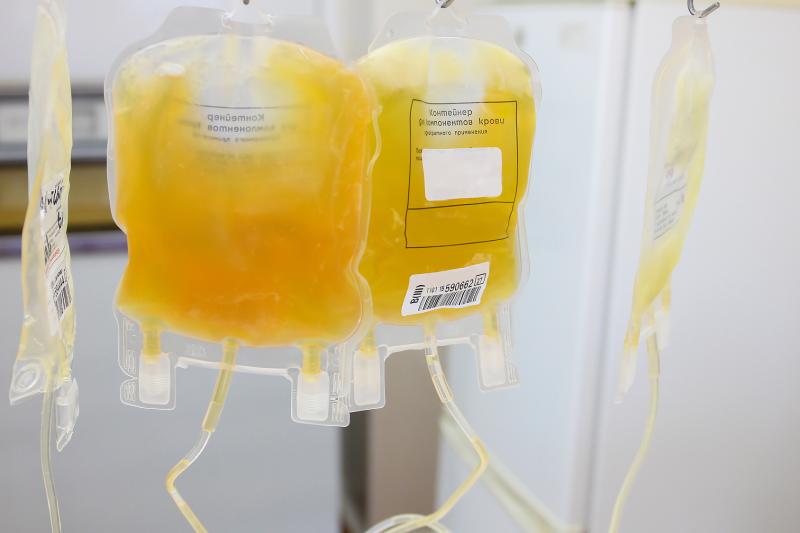 Mass produce your very own platelets
Mass produce your very own plateletsThe transfusion of convalescent plasma may present a possible a treatment option for critically ill coronavirus disease 2019 (COVID-19) patients with acute respiratory distress syndrome (ARDS), according to a recent case series.
“[V]iral load declined within days of treatment with convalescent plasma, and the clinical conditions of these patients improved,” as indicated by changes in chest imaging, body temperature and lung function, the investigative team said.
Of the five enrolled COVID-19 patients, four had no pre-existing medical conditions and none were smokers. All patients had undergone prior treatments with different steroids and antiviral agents. Convalescent plasma therapy was administered 10–22 days after hospitalization. [JAMA 2020;doi:10.1001/jama.2020.4783]
Upon admission, the cycle threshold (Ct) value of the patients ranged from 18.9–38.0. Ct represents the number of qRT-PCR* cycles needed for a fluorescent signal to reach a prespecified threshold intensity, indicating a positive test. On the day of plasma transfusion, Ct values jumped to 22.0–35.9, indicating a lower overall viral load.
Improvements were seen as early as within 1 day of plasma transfusion. After initial and repeat testing, samples from one patient failed to breach the Ct threshold and was thus declared as negative by post-transfusion day 1. Two patients were declared negative on day 3, and the last two tested negative 12 days after plasma transfusion.
These reductions in viral burden came were reflected in better clinical outcomes. Scores in the Sequential Organ Failure Assessment (SOFA) tool dropped from 2–10 during admission to 1–4 on post-transfusion day 12. Body temperature also improved, normalizing 3 days after convalescent plasma therapy from a baseline high of 37.6–39.0 oC.
Participants also showed better lung function, as measured by the Horowitz index, and easing pulmonary symptoms, as reflected by chest computed tomography. There were also post-transfusion drops in levels of biomarkers such as C-reactive protein, procalcitonin and interleukin-6, indicating suppression of inflammation.
Prior to transfusion, all patients were hooked to mechanical ventilators, and one needed extracorporeal membrane oxygenation intervention. Four were weaned off their mechanical support shortly after plasma treatment.
“These preliminary findings raise the possibility that convalescent plasma transfusion may be helpful in the treatment of critically ill patients with COVID-19 and ARDS,” the investigators said. However, due to methodological shortcomings, such as the small sample size, the lack of controls and the co-treatment with other agents, “this approach requires evaluation in randomized clinical trials.”
In an accompanying editorial, Drs John D Roback and Jeannette Guarner, both from the Emory University School of Medicine, agreed that these limitations should be taken seriously. [JAMA 2020;doi:10.1001/jama.2020.4940]
“The intervention … was not evaluated in a randomized clinical trial, and the outcomes in the treatment group were not compared with outcomes in a control group of patients who did not receive the intervention,” they said. “Therefore, it is not possible to determine the true clinical effect of this intervention or whether patients might have recovered without this therapy.”
While plasma therapies had previously been deployed for other large-scale outbreaks, there remains a shortage of trials that assess its clinical efficacy and safety. The present study, while lacking, nevertheless opens up several possibilities for such investigations and, if the evidence is robust enough, treatment.
*quantitative reverse transcriptase-polymerase chain reaction